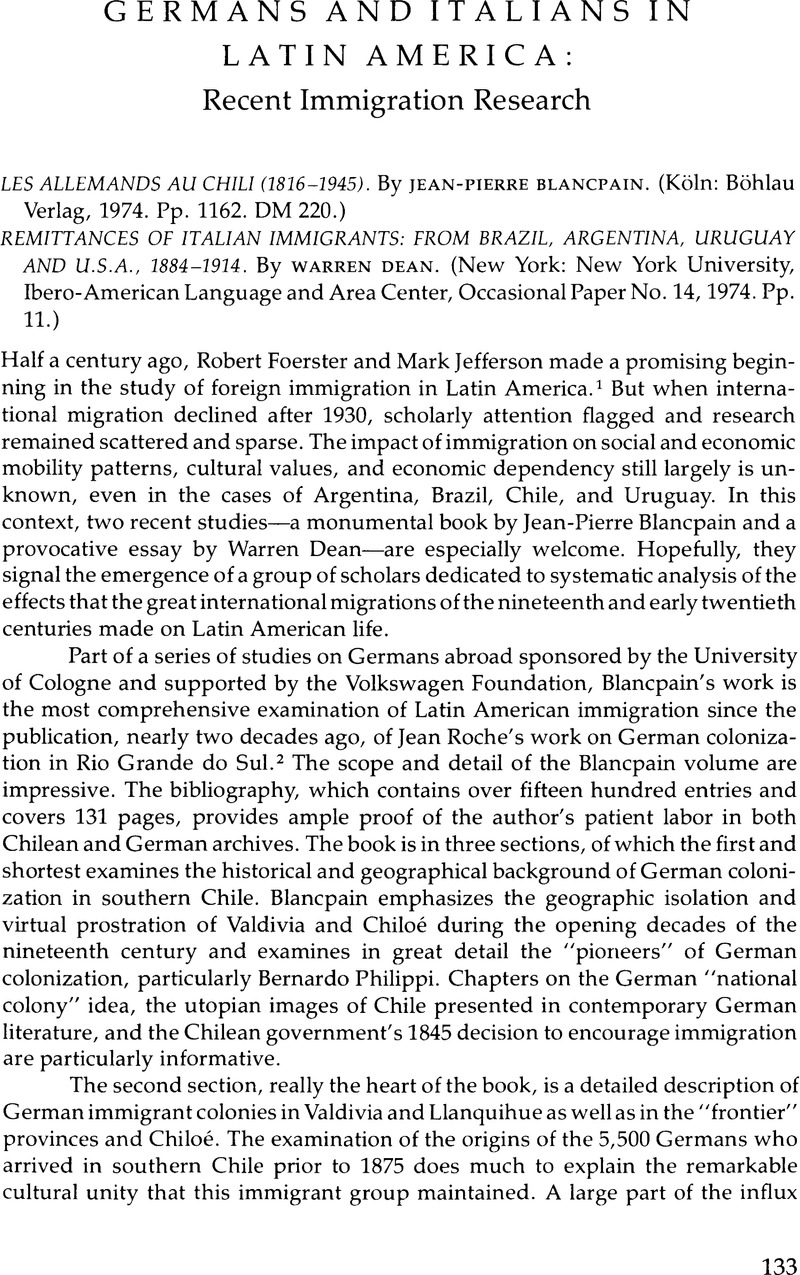Published online by Cambridge University Press: 24 October 2022

1. Robert F. Foerster, The Italian Emigration of Our Times (Cambridge: Harvard University Press, 1919); Mark Jefferson, Peopling the Argentine Pampa (New York: American Geographical Society, 1926); Mark Jefferson, Recent Colonization in Chile (New York: Oxford University Press, 1921).
2. Jean Roche, La colonisation allemande et le Rio Grande do Sul (Paris: Institut des Hautes Études de l'Amérique Latine, 1959).
3. George F. W. Young, Germans in Chile: Immigration and Colonization, 1849-1914 (New York: Center for Migration Studies, 1974), p. 169.
4. For immigration and emigration statistics, see Ernesto Tornquist & Cía., Limitada, El desarrollo económico de la República Argentina en los últimos cincuenta años (Buenos Aires: Ernesto Tornquist & Cía., Limitada, 1920), p. 9. For analysis of re-emigration, see Juan F. Marsal, “Retorno de inmigrantes españoles de la Argentina,” in Marsal, ed., Hacer la América: Autobiografía de un inmigrante español en la Argentina (Buenos Aires: Editorial del Instituto, 1969), pp. 377-406. At least 50 percent of the golondrina immigration was Italian. See Vernon L. Phelps, The International Economic Position of Argentina (Philadelphia: University of Pennsylvania Press, 1938), p. 19.
5. John H. Williams, Argentine International Trade under Inconvertible Paper Money (Cambridge: Harvard University Press, 1920), pp. 47, 106. For background on the Italian banking system in Argentina, see Jorge F. Sergi, Historia de los italianos en la Argentina (Buenos Aires: Editora Italo Argentina S.A., 1940), pp. 359-62.
6. The Tornquist balance-of-payments data appear in Phelps, The International Economic Position of Argentina, appendix table I, facing p. 238.